Moldavite
About
Moldavite is a natural glass formed by the intense heat of a meteorite impact around 15 million years ago in what is now the Czech Republic. It is a type of tektite, and its unique olive to dark green hue is one of its most distinguishing features. Moldavite has a distinctive, wrinkled surface and often displays inclusions of gas bubbles, a result of its rapid formation and cooling. Its extraterrestrial origin has made it a favourite among collectors.
Birthstones & Anniversaries
Moldavite is not a traditional birthstone, but it is often linked to the zodiac sign Scorpio due to its transformative energy.
Crystal Healing Energy
Moldavite is all about transformation and growth, so if you’re ready for a fresh start, this crystal is for you. It’s known for its uplifting energy, helping you tap into your higher self and make meaningful changes. Moldavite is perfect for clearing out what no longer serves you, giving you the nudge to let go of old habits and embrace the new.
Think of moldavite as a partner in evolution — whether that’s spiritual, emotional, or even just in your daily outlook. Perfect for anyone open to a little shift, a little growth, and a lot of new possibilities.
Facts
Meteoric origin: Moldavite was formed when a meteorite struck the Earth in the region now known as the Czech Republic around 15 million years ago.
Unique texture: Moldavite’s rough, textured surface is a result of its rapid cooling after the meteorite impact.
Distinctive colour: Moldavite’s olive-green to dark green hue is one of its most recognisable features.
Rare gem: Authentic Moldavite is becoming increasingly rare, as mining is limited to a small area in the Czech Republic.
Science
Mineral: Tektite (Natural glass)
Crystal System: Amorphous
Chemistry: SiO₂(+Al₂O₃)
Colour: Olive-green to dark green
Refractive Index: 1.48 to 1.54
Birefringence: None
Specific Gravity: 2.32 to 2.38
Mohs Hardness: 5.5 to 7
TreatmentsMoldavite is rarely treated, as its natural texture and colour are highly valued. Some lower-quality moldavite may be polished or cut to create smooth surfaces for jewellery, but the most prized specimens remain in their natural, unaltered state.
SyntheticsDue to its popularity and rarity, Moldavite is frequently imitated. ‘Synthetic’ moldavite is typically glass made to mimic the olive-green colour and surface texture of natural stones. These stones can often be identified through careful examination of inclusions, weight, and overall structure.
ImitationsGreen glass is the most common material used to imitate Moldavite. These imitations often lack the natural bubbles, surface texture, and weight of genuine Moldavite, but they can be difficult to distinguish without expert testing.
similar materialsGreen glass: Many imitations of moldavite are simply green glass, lacking the inclusions and texture of the real stone.
Moldavite Gallery
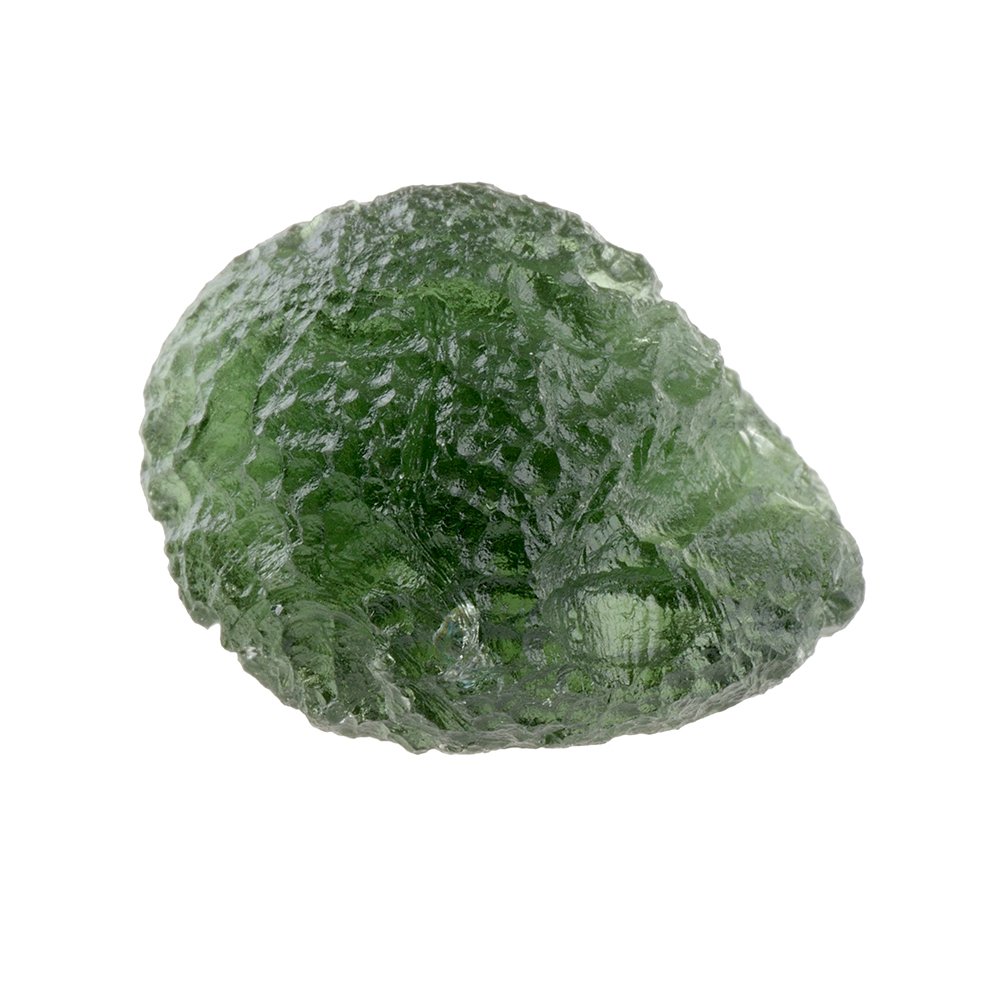
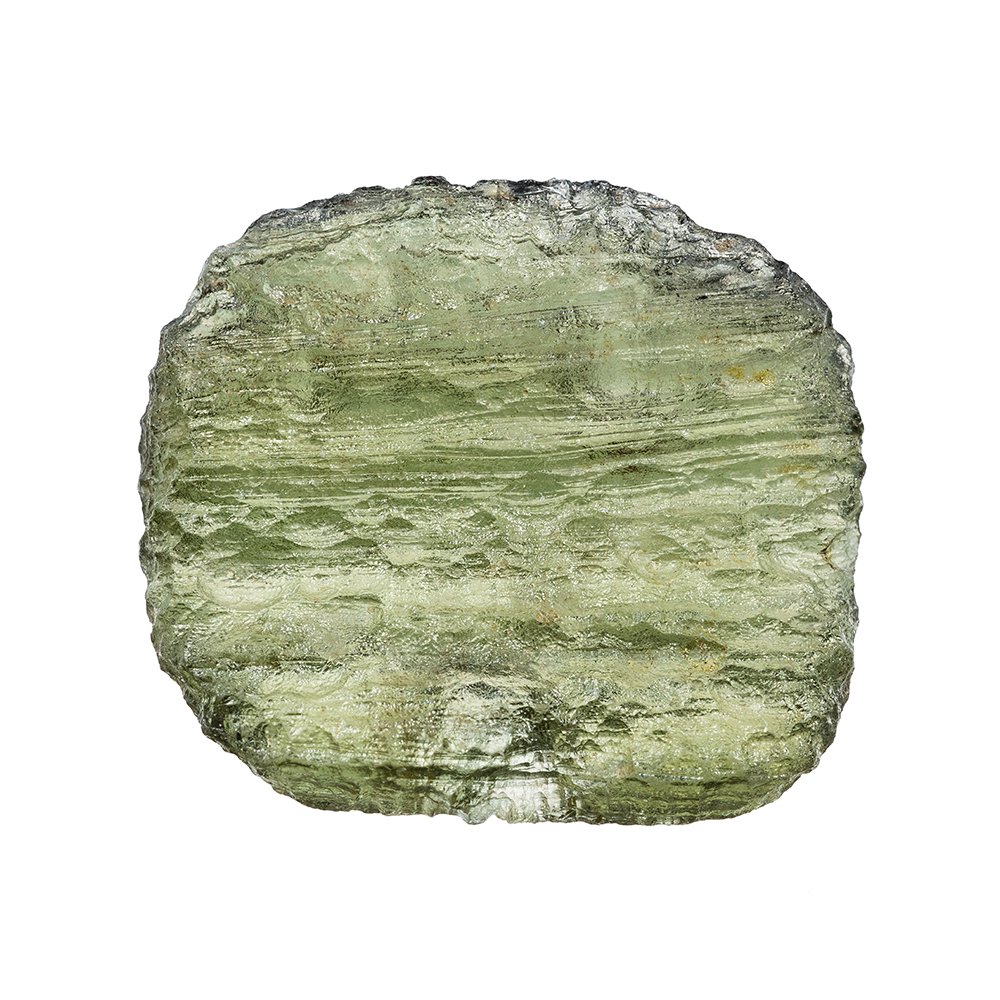
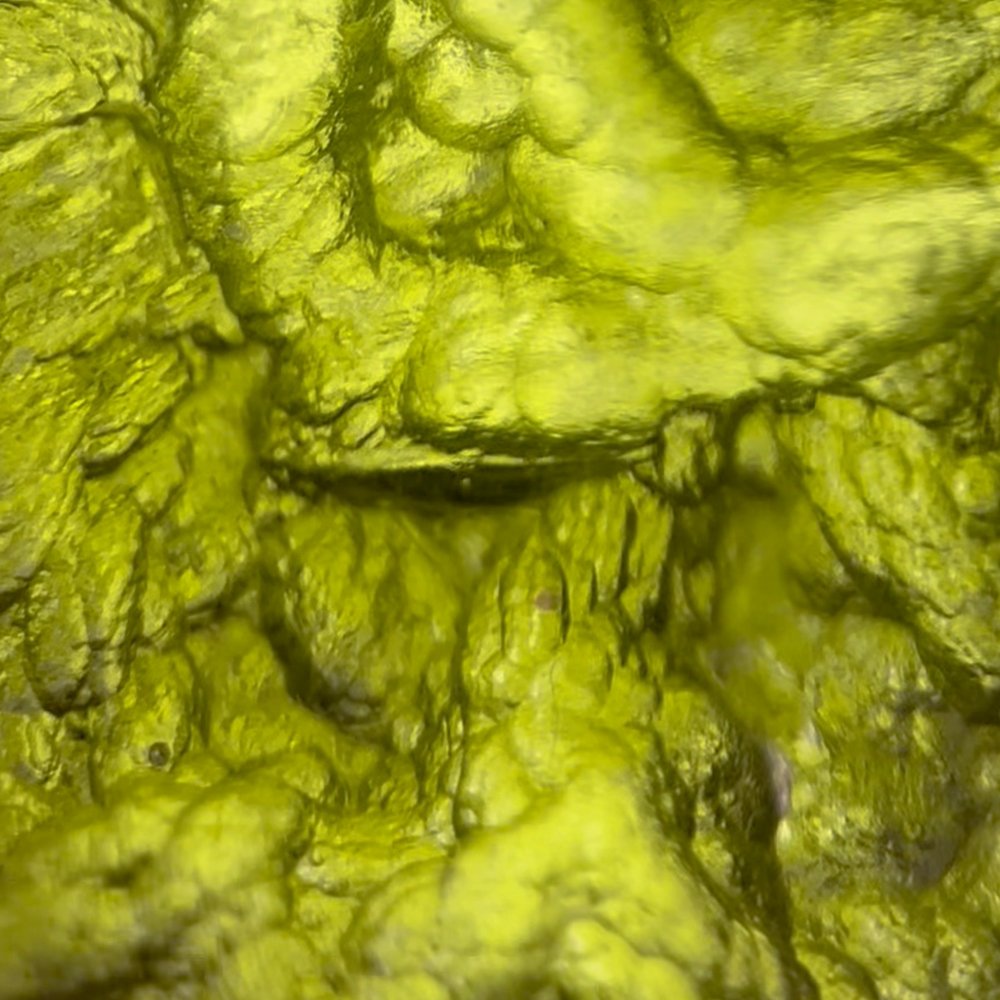
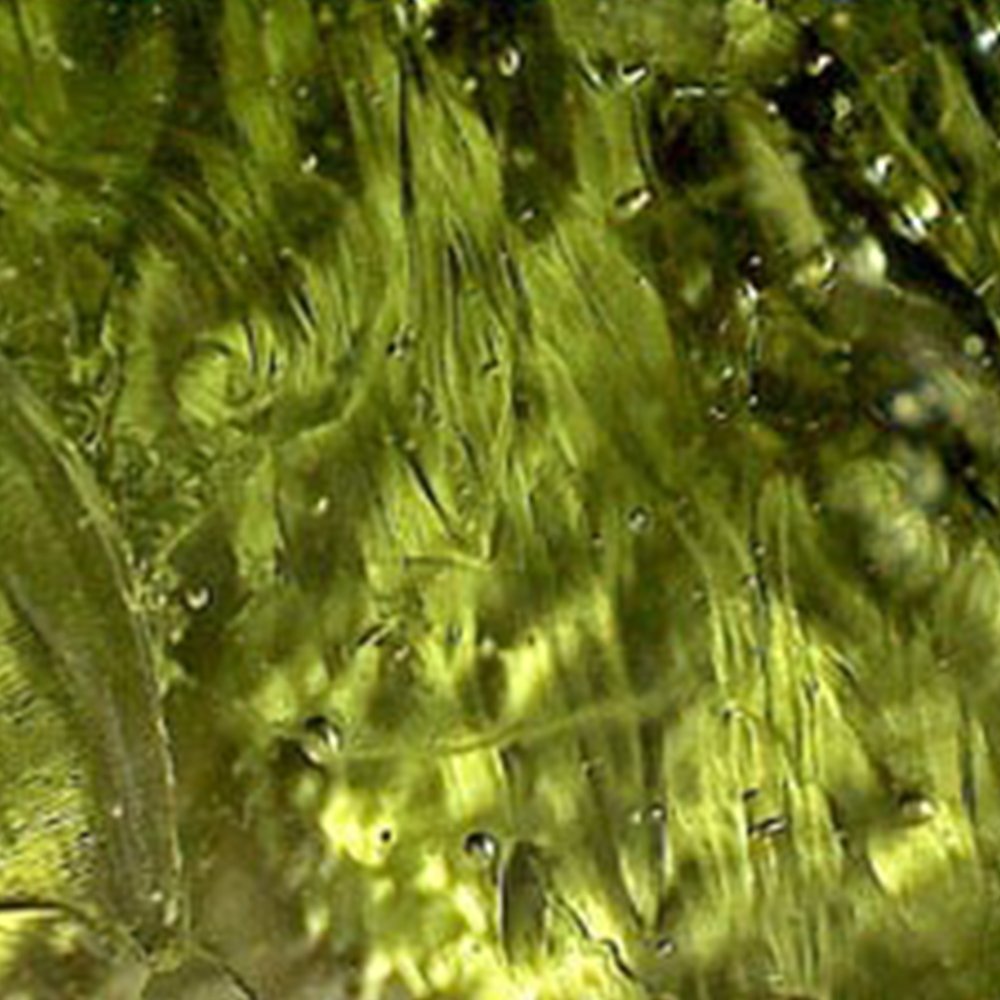
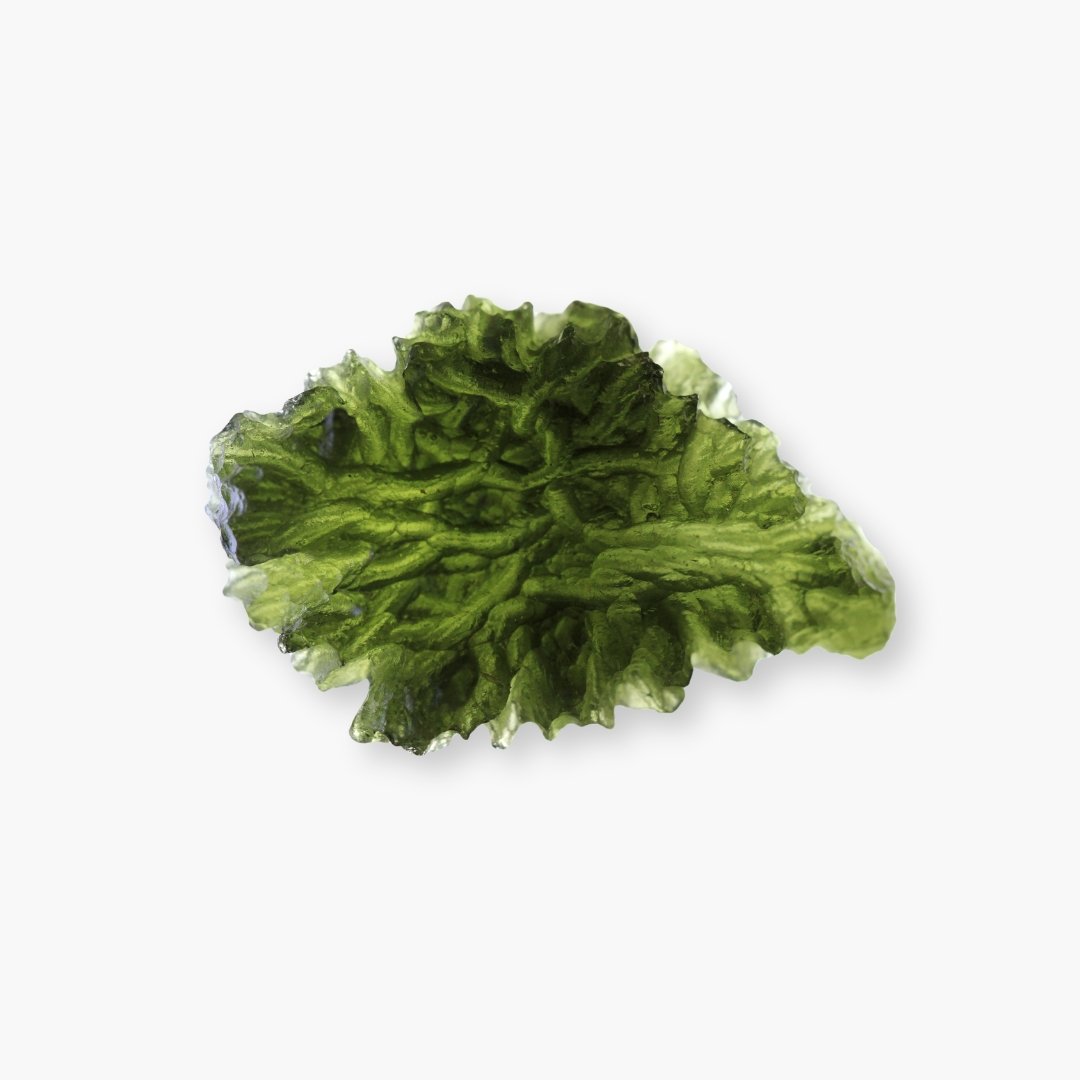
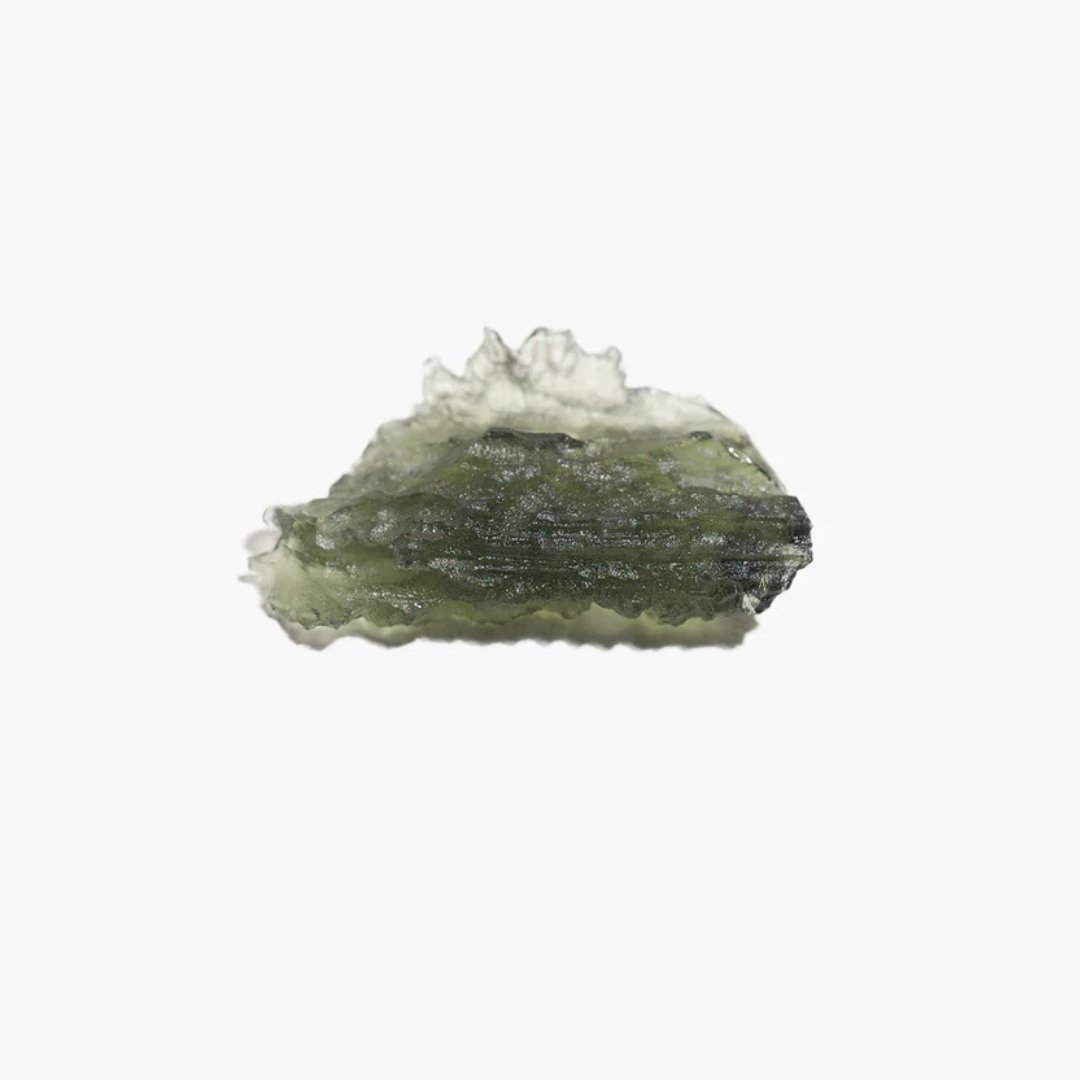
Why We love Moldavite
ExtraterrestrialFormed from the heat of a meteorite impact, moldavite’s cosmic origins make it a truly unique gemstone.
Distinctive TextureIts natural, wrinkled surface adds a tactile quality that is rare among gemstones.
RareWith limited mining and a finite supply, moldavite is increasingly rare and valuable.





